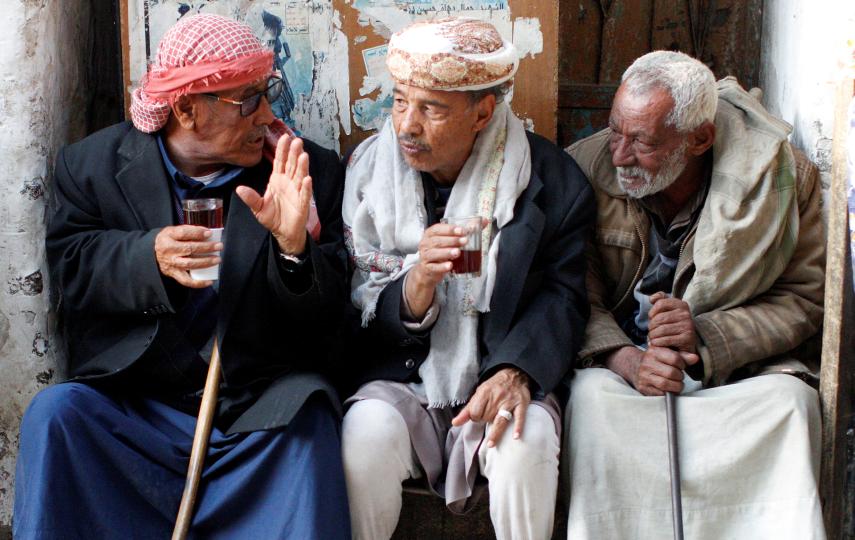While the Richter scale is the most easily recognized measure of an earthquake's magnitude, seismologists say several more dynamic measurement methods have eclipsed it since it was developed more than 70 years ago.
IRIN considers current best practices around the world -from the standard magnitude indicators that replaced the Richter scale to prediction models that estimate an earthquake's economic impact on society.
Moment magnitude scale (Mw)
Today, the most common calculation method for magnitude - the amount of energy released by an earthquake at its source - is the moment magnitude scale (Mw).
Developed in the 1970s by Hiroo Kanamori, professor emeritus at the California Institute of Technology, Mw was designed to succeed several magnitude scales, including the 1930s-era Richter scale, whose model was solely based on the geology of California, where earthquakes are mostly shallow.
By taking into account the actual area of fault line ruptured, Mw gives a more consistent measurement to earthquakes no matter how deep.
"The media still say Richter scale in news reports, but seismologists use magnitude only. Magnitude can be calculated with different formulas," Takeshi Koizumi, seismologist at the Japanese Meteorological Agency (JMA), told IRIN.
Koizumi said these data are very important for seismologists to predict tsunamis and other earthquake-induced hazards.
Modified Mercalli intensity scale (MMI)
Unlike the Richter scale and Mw, which assess the earthquake's size in terms of magnitude, the MMI describes earthquakes in terms of intensity. Numbers are used to describe magnitude; Roman numerals are used to express intensity.
Intensity - a completely different concept - indicates how much shaking is felt and the level of damage in a specific location, according to Peeranan Towashiraporn, an earthquake engineer at the Bangkok-based Asian Disaster Preparedness Center (ADPC).
"Many people think high-magnitude earthquakes must result in greater damage, but this is not always the case, it depends on location. If you are far from the epicentre, intensity can be low and you may feel very little shaking," Towashiraporn explained.
Amod Dixit, general secretary of Nepal's National Society for Earthquake Technology (NSET), says it is easier for non-scientists to understand earthquakes in terms of intensity. "Magnitude is a scientist's language. You and I are more concerned with the practical implications of an earthquake," he said.
As a result, using magnitude to measure earthquakes often causes people to underestimate their impact. "Engineers here [in Nepal] claim to build houses that can withstand magnitude-7.0 earthquakes, but that doesn't mean it can withstand intensity IX. Low-magnitude earthquakes can also bring high intensity of shaking," Dixit said.
Citing the magnitude-6.1 earthquake near Christchurch in New Zealand in February 2011 as an example, Towashiraporn agreed that magnitude alone can be misleading. "A moderate magnitude-6.1 earthquake can still cause significant damage and loss of life if it happens at a shallow depth and is very close to a highly populated area," he said.
At least 181 people were killed, 1,500 injured and about 100,000 buildings destroyed or damaged, according to figures from the United States Geological Survey (USGS).
The Japan Meteorological Agency seismic intensity scale (JMA)
The JMA scale measures intensity in the units of "Shindo", and is analogous to the MMI. The only difference is JMA measures intensity from 0 to 7 and the MMI runs from I to XII.
While the MMI is applied worldwide, JMA is only used in Japan and Taiwan. Koizumi said JMA gives the world's fastest intensity information.
"The initial estimation comes in 1.5 minutes after an earthquake occurs. Then after a few seconds, a warning is issued to the general public on TV," he explained, adding that seismic intensity meters have been installed throughout the country, making calculation much faster.
According to David Wald, seismologist at USGS, the USGS-developed ShakeMaps - an automatically generated shaking and intensity map that combines instrumental measurement and local geology and earthquake information of a region - can also compute earthquake intensity in near real-time.
Prompt Assessment of Global Earthquakes for Response (PAGER)
Against the decades-old debate of whether the magnitude scale or the intensity scale gives better earthquake measurement, the USGS developed this new technology in 2010.
Taking into account the demographics, building types and economic and casualty data collected from past earthquakes, PAGER estimates the shaking distribution, the number of people and settlements affected, and the possible fatalities and economic losses experienced.
PAGER is still new to most people, but the information it offers is useful to governments and aid agencies. "The PAGER turns the estimates of damage into colour-coded alert levels, so local, national and international actors know what level of response is needed," Wald said.
Apart from providing data for post-disaster mitigation, PAGER tops the other scales by generating information that helps prepare for earthquakes. "The PAGER highlights the most vulnerable structures that need improvement. This is especially important for developing countries where people don't always follow building codes," he said.
"The system still awaits more awareness from governments, the scientific community and the media," Wald said. "To communicate the seriousness of earthquakes, magnitude and intensity alone are not enough."
sh/nb/mw
This article was produced by IRIN News while it was part of the United Nations Office for the Coordination of Humanitarian Affairs. Please send queries on copyright or liability to the UN. For more information: https://shop.un.org/rights-permissions





